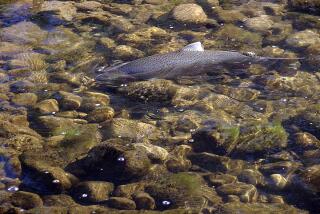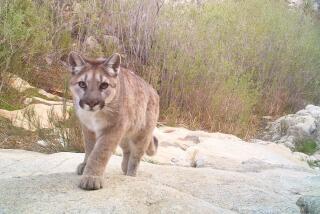Opinion: Is America’s wild horse an invasive species, or a reintroduced native?

Pleistocene, shmeistocene. To lovers of North America’s wild horses, the mustangs’ link to their Ice Age relatives is far more important than their descent from introduced, domesticated horses.
The fans of today’s wild horses are petitioning the U.S. Fish and Wildlife Service to list the animals as an endangered species because open rangeland is reduced and also less fit to graze. Cattlemen see the horses as pests who take up public land that would be better used for grazing herds; they favor continuing to herd them up and ship them...anywhere. Many environmentalists see both the cattle and the horses as invasive species that compact the land in unnatural ways, making it hard for native plants to grow, and that take up what should be habitat for wildlife.
Horses originated in North America but went extinct from the continent some 10,000 to 12,000 years ago—though some made it across the land bridge to Eurasia, where they developed into the zebra and the horse we know today. Then in the 1600s, the Spanish brought domesticated horses to the continent. Some of those went wild—thus the current wild horse.
To the two groups that filed the petition, Friends of Animals and the Cloud Foundation, this was the re-introduction of a native species, much like the federal government re-introduced the wolf and grizzly bear to the Yellowstone National Park area after they had been hunted to extinction through most of the nation.
This is an argument that the Bureau of Land Management, which largely wants to rid its lands of the wild horses, has never bought. The groups hope for a better reception from Fish and Wildlife.
It seems like a reach, to be sure. For one thing, there are tens of thousands of wild horses, and they reproduce freely. It’s also a stretch to say that the Ice Age horse that went extinct thousands of years ago was, for most intents and purposes, the same as the one that now roams Western lands. It’s unlikely they would be considered the same species. Wolves were hunted to near-extinction in the lower 48 in about 1960; they made their reappearance about 20 years later, crossing over from Canada, and then were re-introduced to Yellowstone and Idaho in the 1990s. One is the same animal; the other is a descendant species.
Still, this raises interesting questions about which animals we are willing to consider natives and which we aren’t. It’s a rare bison that doesn’t have a strong strain of domesticated cattle in its blood. The musk oxen of Arctic Alaska aren’t natives; after those were hunted to extinction, new individuals were brought in from Greenland.
The same debate goes on among plant biologists. Considering that nature is not static, but rather is continually favoring some species over others, or bringing plants to places where they never lived before, how long does a plant need to hang around before it’s considered a legitimate resident and not an invader?
The land that ancient wild horses trod was probably quite different from the range they graze today. So environmental questions about “truer” natives---the ones that stuck around and did their evolving in North America—has to be considered. Horses might not have a place in the wild lands of today, if their presence harms other wild animals. But then why isn’t that true of cattle, which way outnumber horses? And for that matter, white-tailed deer, wild, native animals, have become an overpopulated pest that threaten forests in the Eastern United States. “Native” isn’t necessarily the same as “good for the environment.”
What do you think? Should the wild horse be considered an endangered species within North America? Or is its time as a native species long over? And if not, should it be preserved anyway as a symbol of the Old West?
More to Read
Start your day right
Sign up for Essential California for news, features and recommendations from the L.A. Times and beyond in your inbox six days a week.
You may occasionally receive promotional content from the Los Angeles Times.







